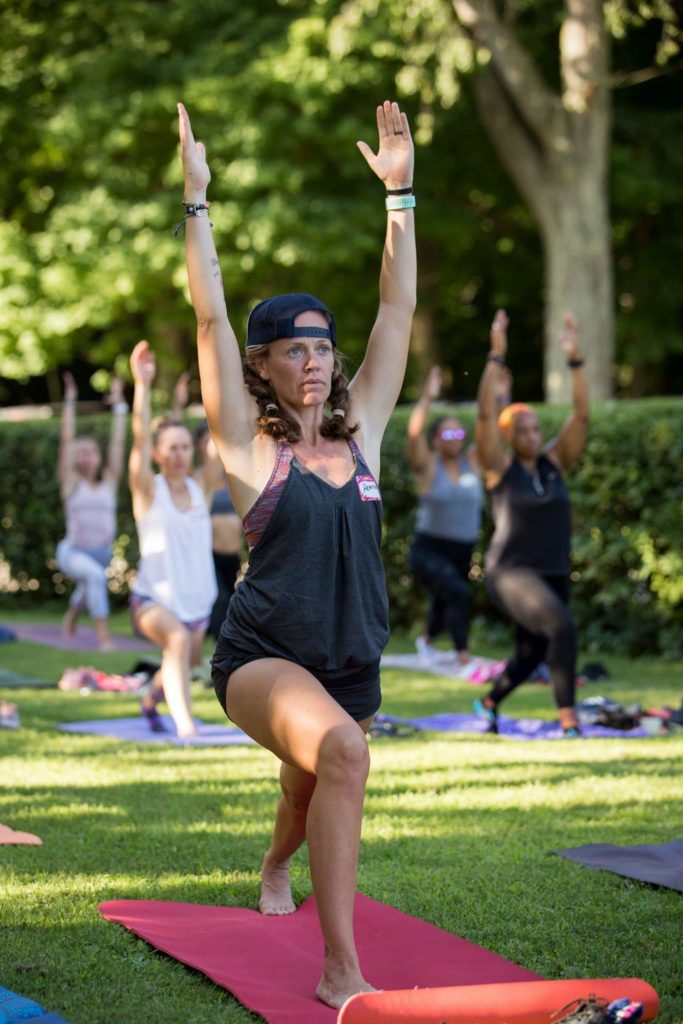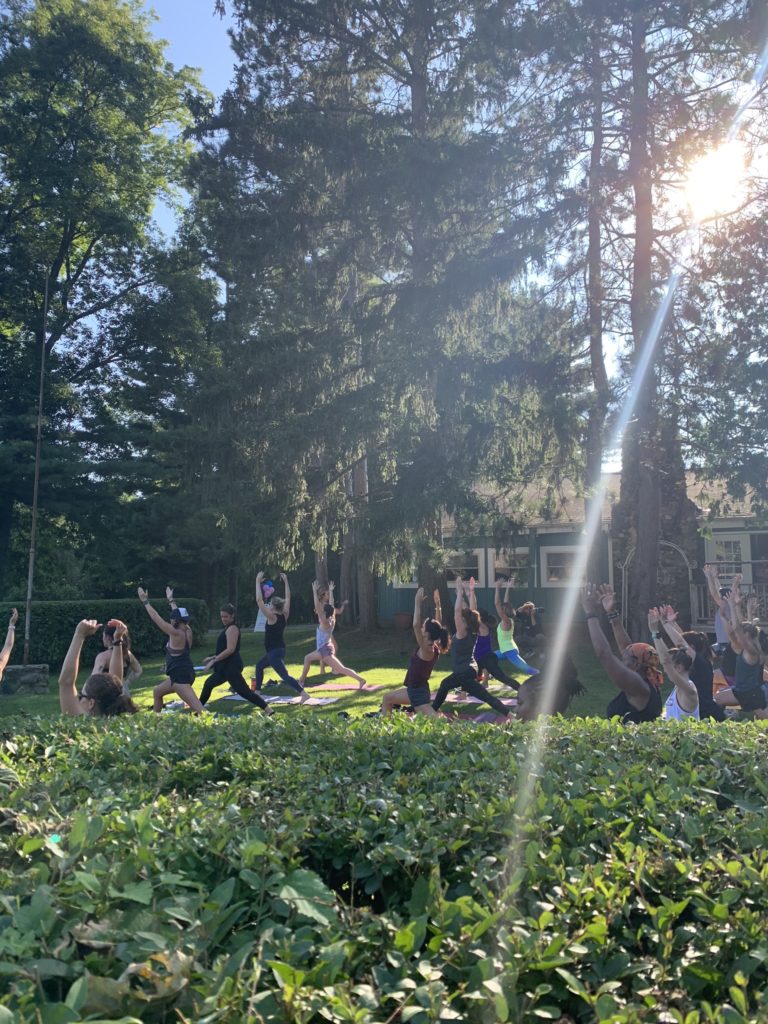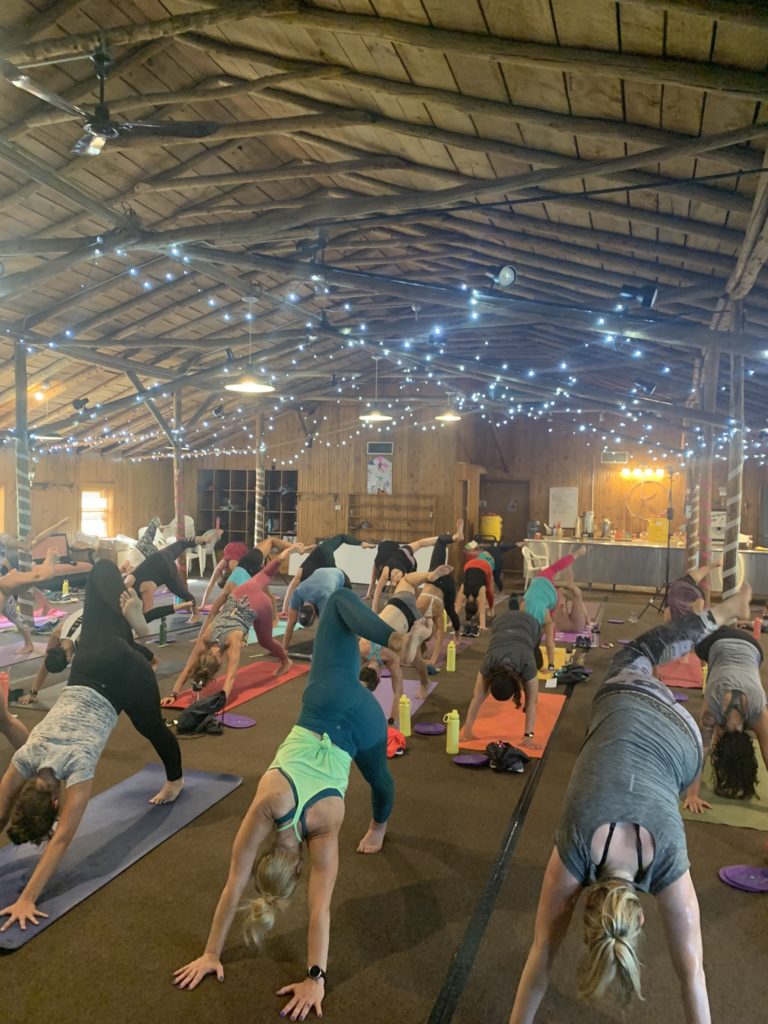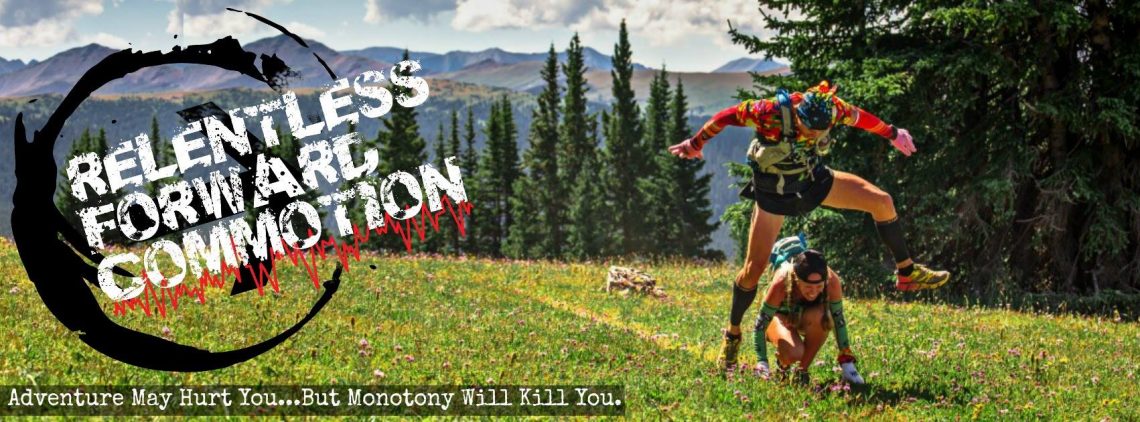Last Updated on August 26, 2019 by Heather Hart, ACSM EP, CSCS
I already know what you’re thinking: “Yoga for ultra runners? No thank you, it’s too boring/too hard/too time consuming/ I’m not flexible/etc. I’d rather run.”
Yeah, I can relate.
You see, I’ve been active my entire life. From tap dancing and ballet as a little girl, to tearing up the soccer fields and track as a teenager, to perpetually chasing ultra distance finish lines as an adult: physical movement has always come easily to me.
Until I met yoga.

I know, I know, yoga is a “practice” and there is no good/bad/right/or wrong when it comes to this form of movement. But as an athlete who tends to take things to the extreme and manage to hold her own, I find yoga to be frustrating and uncomfortable.
I am capable of covering 100 miles on foot without sleep, I hit the weight room hard and more frequently than most, yet 30 seconds in “downward dog” can defeat me.
Yoga, for me, is humbling.
Which is exactly why I know yoga is something I probably need in my life. And if you’re an ultra runner, chances are you could benefit from yoga as well.
What Are the Benefits of Yoga for Trail & Ultra Runners?
I reached out to a few yogis, and together, we’re going to tell you about the benefits of yoga for ultra runners, and how you can start incorporating a yoga practice into your ultramarathon training.
1. Loosen Up to Run Better.
Running is a series of very repetitive, one directional movements, Sure, if you hit a technical trail those movements are going to be more varied, but as a whole running is very one directional. When you consider the often extreme mileage put in by ultra runners, we are talking about tens of thousands of steps (or more) per day.
The repetitive motion can cause a lot of muscular tightness in runners, specifically in the hamstrings, hips, and low back. I’ve yet to meet a runner who hasn’t experienced tight hamstrings.
To be fully functional, a muscle needs to contract when needed and also relax and lengthen when needed. A healthy muscle is able to move through a healthy range of motion, therefore, a tight muscle is a weak muscle. And weak muscles can leave you more injury prone.

Yoga encourages flexibility and mobility of muscles and joints. A regular yoga practice can undo much of the tightness caused by ultramarathon training and racing, therefore making you a stronger, less hindered, and possibly less injury prone runner.
2. Build Physical Strength
As we’ve already discussed, running is a one directional, repetitive movement. As such, runners tend to build a lot of strength in the muscles that are required for that specific movement. Other muscles are under used, or entirely unused, causing weaknesses and muscular imbalance.
Yoga poses – especially ones that involve balance – require complete stability in all planes. Not to mention, many yoga poses utilize the muscles of the upper body, which are rarely used while running. This forces runners to use, and strengthen, their often ignored muscle groups.

Ultramarathons, especially those that take place on rugged terrain with a lot of climbing, require a lot more than simply strong legs.
After carrying a hydration pack on your shoulders for dozens of miles, using your core to balance on a narrow, technical trail, or leaning into trekking poles while climbing mountains for hours on end, you’ll be grateful for the full body strength gained by a regular yoga practice.
3. Improve Mental Strength
There is no denying that mindset and attitude can make or break a runner during an ultramarathon. Mental strength, and the ability to pull yourself out of some extreme lows, can mean the difference between reaching the finish line or ending your day early with a DNF.
Yoga can help.
“Yoga and running are similar in that you quiet down the mind, block out all distractions, take time to notice how you feel and manage your breath.” says Denise Clifford, yoga instructor and owner of Yoga at Cherry Grove Beach, in South Carolina.
“As you get into those long running miles the runner, through yoga practice, is able to quiet down the inner voice that may be voicing doubt and find that inner strength. Yoga teaches you about your inner voice and your inner strength and energy.”
4. Improve Balance
Proprioception is your perception or awareness of the position and movement of your body in space at any given time. It’s also one of my favorite exercise science words.
When it comes to success on the trails, balance is absolutely crucial. It can be the difference between tripping on a root and catching yourself, or tripping on a root and ending your race with a broken ankle.

Many yoga poses emphasize balance. This will not only help strengthen the stabilizing muscles that help increase balance, but it can also increase proprioception on a neurological level.
related: 6 Lower Leg Strength, Stability, and Balance Exercises for Trail Runners
5. Increase Lung Capacity
We all know how to breathe, it’s a subconscious physical movement essential for our survival. But did you know there are different types of breathing?
The breathing pattern used in running involves quick and shallow inhalations and exhalations. This uses only the upper portion of the lungs. Breathing techniques utilized in yoga involve slower, deep inhalations and long exhalations, making use of the upper, middle, and lower portions of the lungs.
This style of breathing has been shown to increase lung capacity and pulmonary function (source) . Greater lung capacity increases endurance, something ultra runners can never get enough of.
6. Remove Ego, Build Patience
Ultramarathon distances can be humbling. They can also be wildly unpredictable. One thing I often remind my ultra clients – and myself – is to respect the distance of these races.
So many things can, and often do, happen over the course of 50+ miles. Good or bad, you have to learn to go with the flow, and practice patience to get through the moment or the mile you are in, in order to be successful at ultra running.
“It can be so tempting to allow your ego to get in the way during a yoga class.” says yoga instructor and certified Exercise Physiologist Christina Messer.
“For example, certain poses like arm balances can be really challenging for our body and mind. A lot of times we feel apprehensive when we first start practicing these types of poses.”

” A negative, fear-based thought process is definitely not going to help us achieve a solid arm balance. But, if we stay in the present moment, focus on our breath and simply do what we can do, this will help us to make progress. The practice of shifting our focus back to our breath can be super helpful in ultra running, too!”
How to Start a Yoga Practice As a Runner
If I’ve managed to convince you of the benefits of yoga for ultra runners, you’re now probably wondering how to start. Here’s a few tips to get you going:
1. Choose a style of practice.
There are 8 major styles of yoga. (I know, this was a surprise to me as well!)
Some, such as Ashtanga, can be very rigorous and physically demanding. Others, such as Hatha, are very basic and beginner friendly. Which style you choose is certainly up to personal preference, and what you hope to gain from your yoga practice.
Or, if you’re like me, you choose whatever is available at your local gym.
Which type of yoga is most beneficial for ultra runners?
“Since we know that the repetitive motion of running often contributes to muscular tightness, I would counteract that with any type of class that incorporates stretching.” says Christina
“I especially like a well-balanced Yin Yoga practice (also known as restorative yoga) for runners. In this type of class, the stretches are held for 3 – 5 minutes a piece. This length of hold has been shown to be effective for not only the muscles themselves, but also for the muscular fascia & connective tissue, as well.”
Don’t have a gym or yoga studio? No problem! Youtube has endless yoga videos for free, and there are a number of paid streaming services available.
2. Modify your Practice.
Struggling to touch your toes because of your tight runner hamstrings? You aren’t alone. Christina weighs in on yoga modifications for runners:
“In my experience, the runners who have come to my classes have often presented with tightness through their thighs (hamstrings/quads/psoas) and calves (gastroc/soleus). What usually helps the most with this is to modify the pose in order to make it more beneficial. You can modify a pose with or without a prop (like a yoga strap or a yoga block).
“For example, in a seated forward fold (like paschimottanasana), if you can’t quite reach your hands to your toes, you can do any/all of the following and still achieve the full benefit of the pose: bend your knees, widen the space between your feet to about hips-distance apart (as opposed to keeping legs/feet together) or use a strap around the soles of your feet.”
Most importantly, drop the stubborn runner ego, and don’t do anything that hurts.
“Remember, we want the yoga practice to compliment your run training.” says Christina “Trying to force your body into a pose or position is probably going to do just the opposite of that. “
3. Remember: Yoga is a PRACTICE.
Ladies and gentlemen, this is hands down the hardest part of yoga for me. I’m often competitive to a fault. I’ve been uninvited to board game nights at friend’s houses. I go out way too fast during races because I think I am immune from crashing and burning.
And I’ll be the first to admit: I try to “win” yoga classes. I’m guilty of eyeballing my neighbor to see if I can hold a pose longer or deeper than they can.
And guess what? I never do.

photo credit: James Pancoast
But as many yogis and yoga instructors have reminded me: yoga is a practice. The whole goal is to meet your body where it is each day. To look within, to surrender, to respect, and honor your body where it is at any given moment of any given day.
Yoga is a practice, not a competition.
Let go of any feelings that you have to be “good” or the “best”…and definitely don’t try to “win” yoga. It doesn’t work that way (trust me, I tried.)
Yoga for Runners: Final Thoughts
I know that adding another form of training into an already full ultra marathon training schedule can be tough. But if you’ve ever considered trying yoga, I’m giving you the coach green light: it’s worth making the time for.
The benefits of yoga for ultra runners cannot be denied. Think of yoga as not only a means of making you a stronger athlete, but a sort of maintenance to keep you balanced and injury free.
Heather Hart is an ACSM certified Exercise Physiologist, NSCA Certified Strength and Conditioning Specialist (CSCS), UESCA certified Ultrarunning Coach, RRCA certified Running Coach, co-founder of Hart Strength and Endurance Coaching, and creator of this site, Relentless Forward Commotion. She is a mom of two teen boys, and has been running and racing distances of 5K to 100+ miles for over a decade. Heather has been writing and encouraging others to find a love for fitness and movement since 2009.

Erin
A coworker teaches yoga part time, and just yesterday I asked him for some hints for adding a yoga practice to my running schedule. What perfect timing, your post cemented everything I’ve been thinking.
Deborah Brooks
I feel so much better when I have yoga in my life! I try to get there once a week in the summer time and more in the winter
Christine Parizo
I really love yoga on rest day, and I try to squeeze in a short practice most evenings. It’s great for stretching out sore muscles.
Patricia D
OMG yes! I’ve been doing yoga for a little over a year now, to try and increase my flexibility so I can do more exercises (i.e. deadlifts) with correct form. And yoga is a STRUGGLE. I have come home in tears from many a yoga class – I wasn’t trying to “win” the class but I definitely have a. ‘it’s complicated’ relationship with yoga. I know it’s good for me even as I’m not doing the poses “perfectly” but I still feel like a failure if I’m not able to get into a pose like the 21-year-old-gymnast at the front of the room.
Anyhow – I feel you 100% !